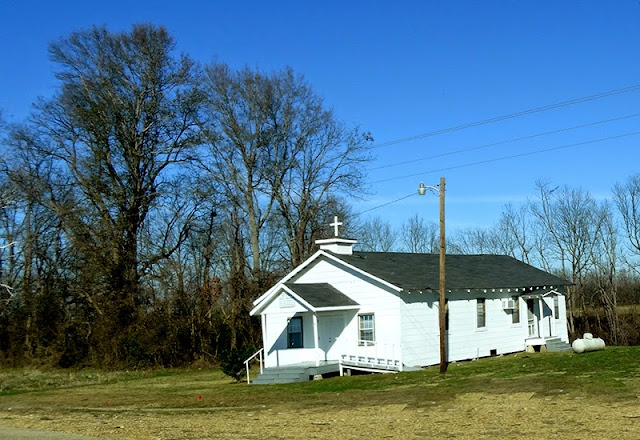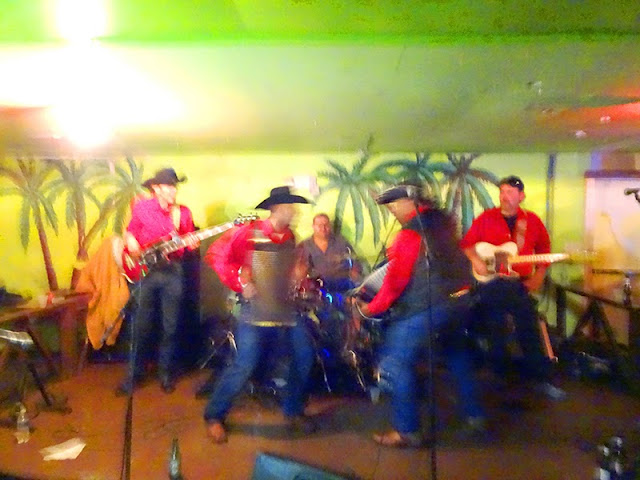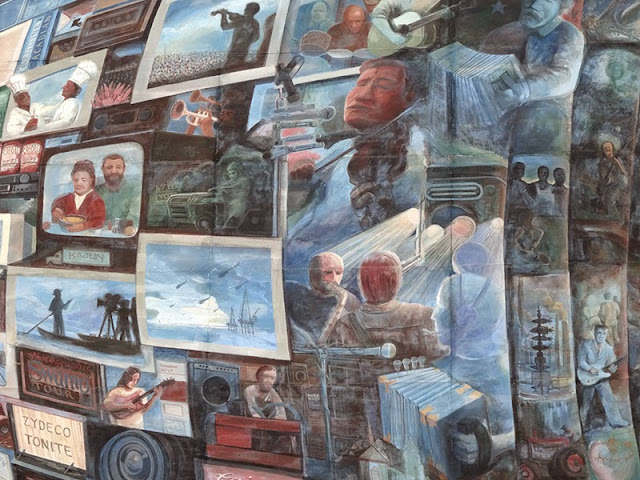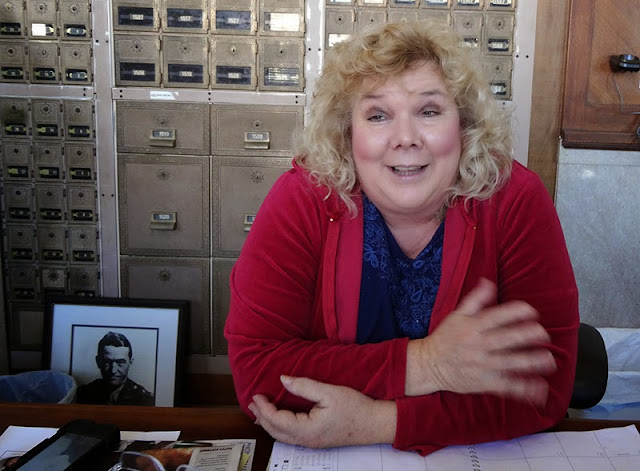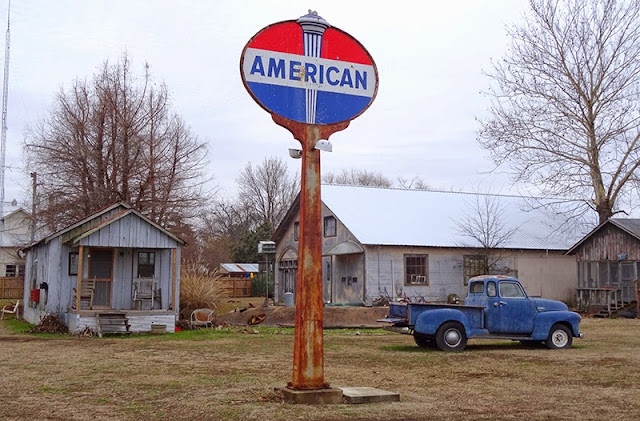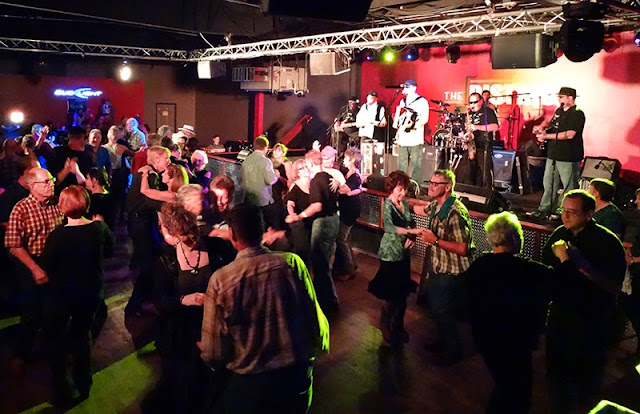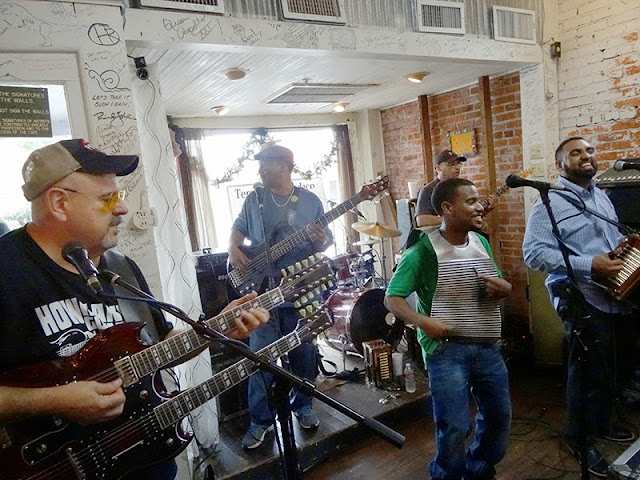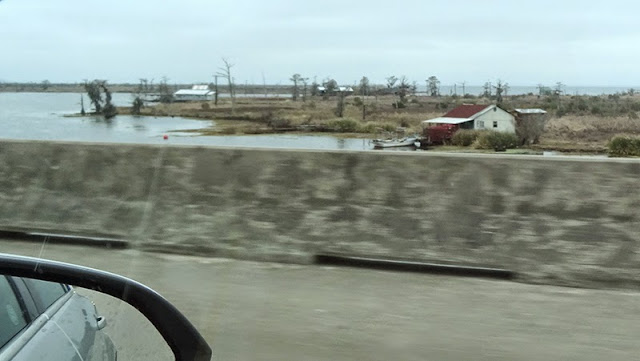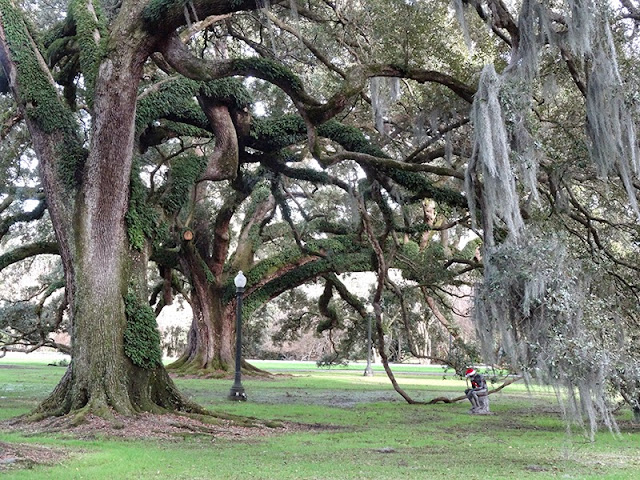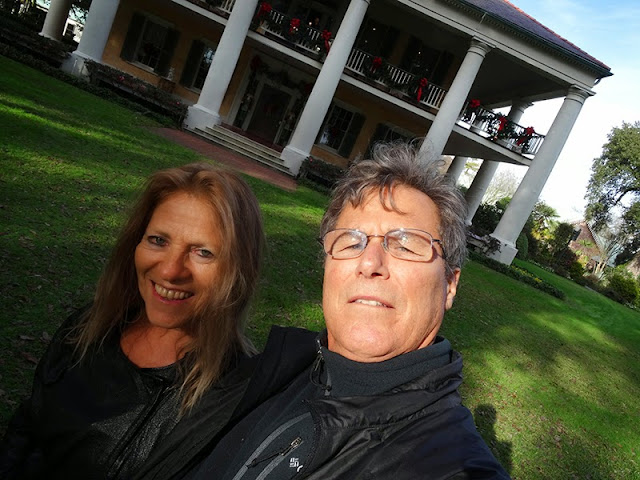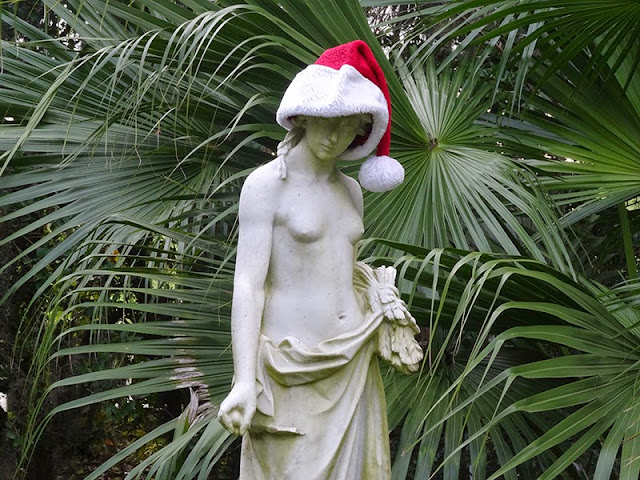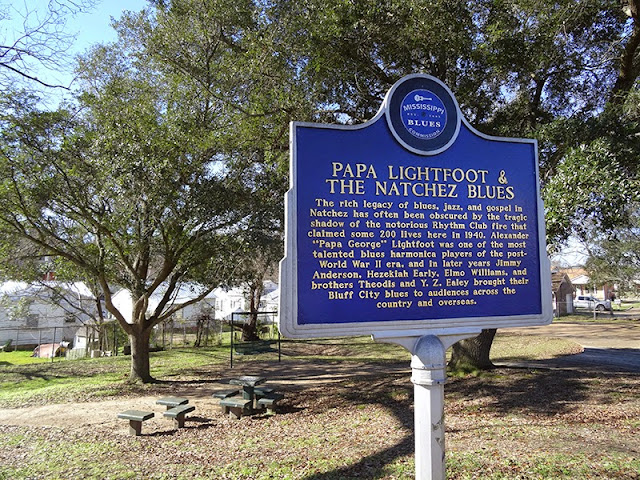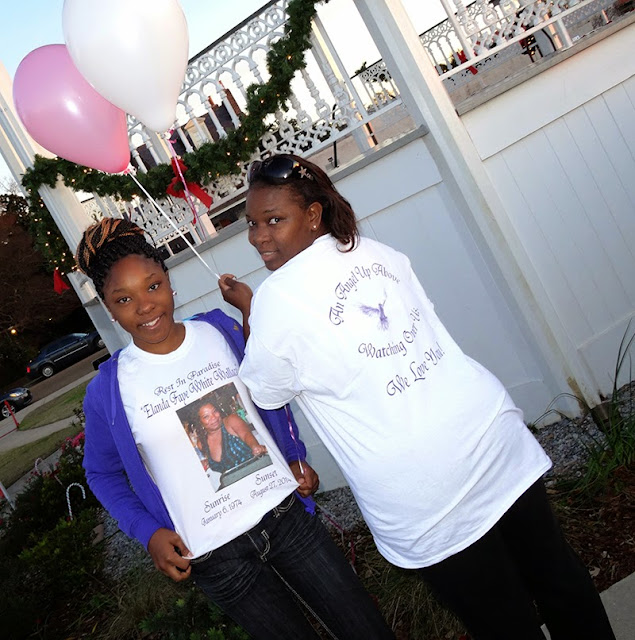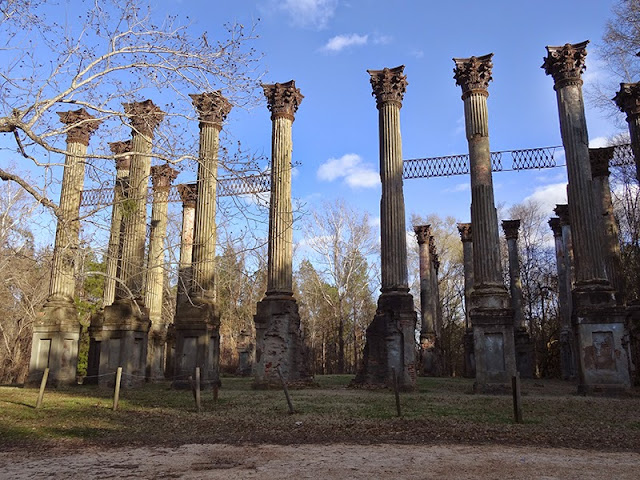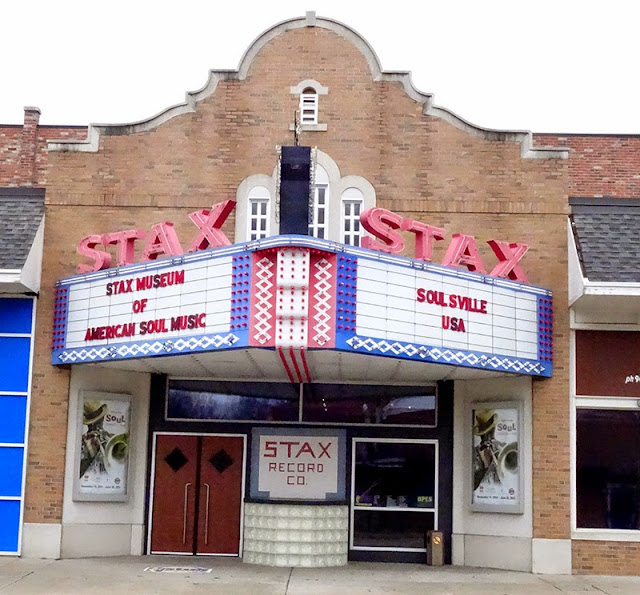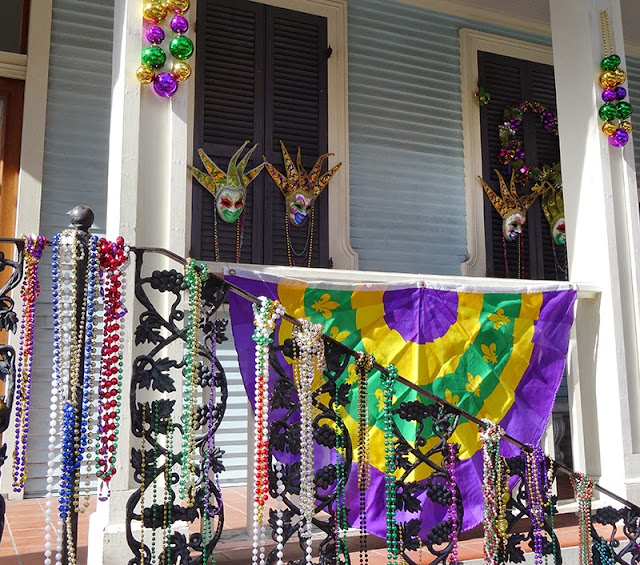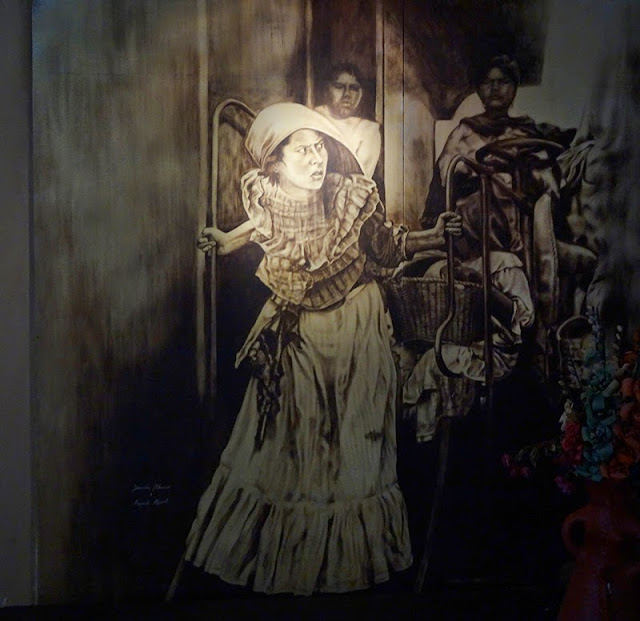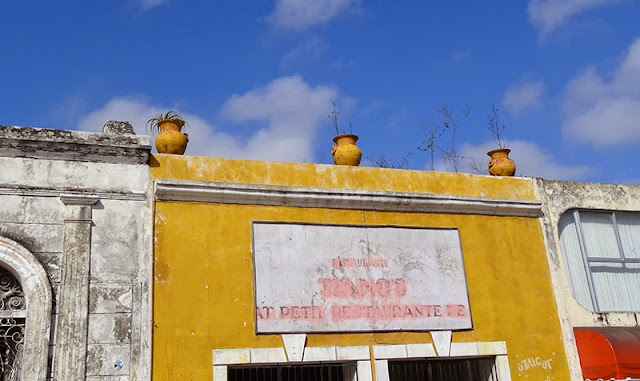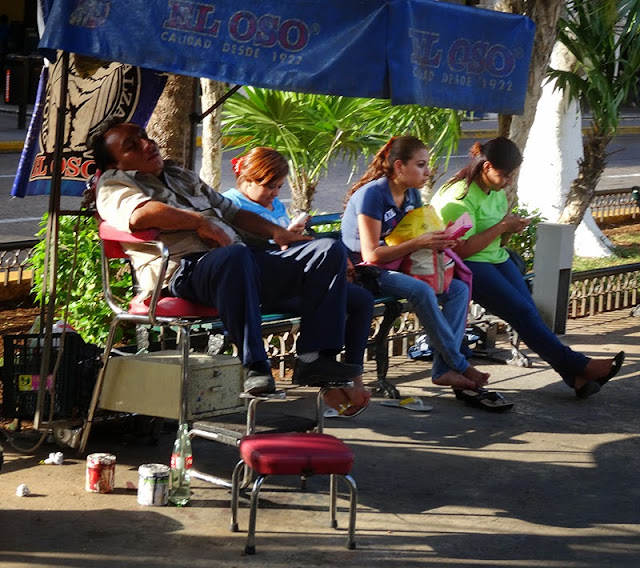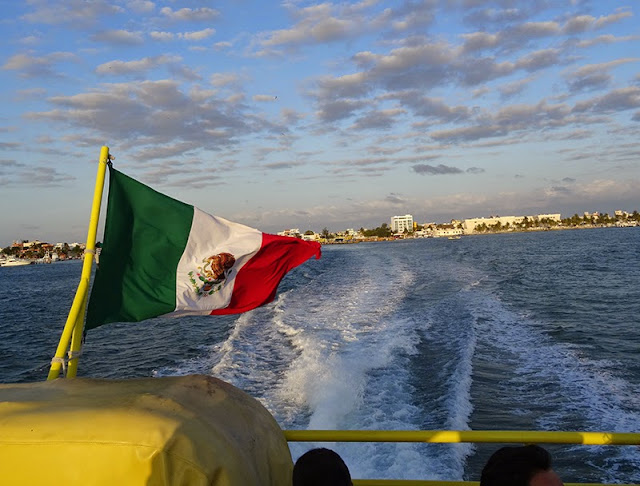Shakin' it up in Cajun Country and The Mississippi Delta with beach time Yucatan.
Each of the 5 photos below is the cover of a photo album. You double click on the link below the photo and it takes you to that album. If you are also interested in reading about the trip, it begins after the photos with the intro to Cajun Country and The Mississippi Blues.
#2 Album
|
|
Cajun Country and The Mississippi Blues
Intro
This blog is about our recent adventure in Louisiana and Mississippi. Many questions were raised about the origins of our music. The first section tries to answer some of those questions by offering my personal observations and an historical context. The second section contains the journey itself. It offers a roadmap of our trip through photos and places visited.
________________
Part I-An Historical Perspective
________________
You really can’t understand all that is America without visiting the South. We went to dance but soon realized that there was a bigger story. For us it started in Louisiana. This was the South, the birthplace of American music. When you’re a kid you don’t think much about origins of your music, only what you like and don’t like, what’s danceable, what moves you. We’d hear the music on the car radio and sing along. We’d do our chores and homework listening to the Top 40. We’d go to a sock hop at the local recreation center, hang out with the gang, and dance to noise most parents found irreverent and obscene. Our music communicated.
I was lucky. My mom loved to dance. In the fifties she would try out rock n roll moves with me after school, moves gleaned from television’s American Bandstand. Elvis and others were like big brothers who articulated our thoughts and gave us a new way to express ourselves. Through the soulful lyrics and interactive body movement, this highly energized music enlivened us. It gave my generation an alternative to the religious based conservatism that was predominant in the culture.
As we traveled in the South, we began to understand why some of the most influential music of the time thrived in this region. There was a melding of cultures. Slavery along with its inherent pain and sorrow, brought with it African culture and tribal religion practices. Their dance and music, with its catchy, lyrical flavor, but invisible color, would fully integrate into the dance and music of their new world.
The region of the South flourished because of Slavery. The wealth generated by man’s inhumanity to his fellow man resulted in architectural splendor and unimaginable riches. All was accomplished under duress and the threat of being beaten.
Slavery was not a new concept, but it was to the South. In fact slavery is still practiced in some parts of the world thriving off of poverty and oppression.
The South, like the land itself was fertile ground for slavery. The distance from the North due to nascent communication and transport infrastructures, kept slavery out of sight and out of mind. Nothing could ever morally justify it. Eventually as awareness in the North grew, America would try and right this injustice with the Emancipation Proclamation.
Religion also thrived in the South. Churches sprang up like mushrooms in the rich soil of the Bible Belt. Literal, classic biblical interpretation became a powerful force to justify slavery and control slaves by offering them hope of salvation. These churches also afforded the slaves a place to congregate together. Besides their grieving, they could share their joy with dance and music. And some went to church just for that. I place to hang out with their friends. It was a sacred place to sing, dance, and play their music.
Geographically there couldn’t have been a better place for slavery to exist unchallenged than the isolated small towns that relied on the mighty Mississippi until the Civil War. All these elements help explain for me why our music was so fresh and unique to the ear’s of my generation and the world.
My First Visit South
In 1960 I visited The South for the first time. By the end of that summer I suspected that it would be my last visit. One can change their mind.
It was a trip to Florida. I was sixteen at the time, living in a Chicago suburb. I recall the train passing via hundreds of run down shacks occupied by black people, all shoddily dressed, washing clothes, working in dusty, small gardens or sitting on front porch rockers. I had never seen poverty like this nor so many blacks.
I met young white people my age who were openly prejudiced, regarding blacks as inferior to white people. Coming from the North I was angered and profoundly saddened by their racist comments.
How could they talk that way about another human being differentiated only by color? In time I began to understand how these values were formed in childhood, reinforced by their parents, and the legal system itself.
Segregation was visible everywhere. I recall clearly marked bathrooms and drinking fountains for colored folk as they were called at that time. Voicing my moral view was only met with more hateful remarks. This was a problem that our country needed to deal with. It was apparent attitudes were not going to change overnight, even though the laws could.
I returned home with a new perspective on America the free. A part of my country was not. A part of my country was foreign to me.
Not everyone was prejudiced. There were the so called Nigger Lovers who openly communicated a need for equality and desegregation. But they were a minority and ridiculed for their belief.
Even the most prejudiced Southern could be kind, thoughtful, and helpful. I have fond memories of the family that I visited. Yet it was easy for that renowned Southern hospitality to get buried under a barrage of
racial prejudice.
The South, though I had only visited Florida, was indeed a fascinating place. The beaches were stunningly beautiful. The Everglades were expansive, uninhabited, and full of unique wildlife. Exploring them on Wind propelled boats, you were bound to encounter alligators, manatees, snakes, strange birds and insects.
And in the dark of night, things were just as interesting. One evening at the strike of twelve we chased a mysterious light on an eerie straight road bordered by swamp. You never quite caught up with the light, as bright as a motorcycle headlight. It came from a distance at high speed toward our darkened car, growing brighter and bigger until it was so close you thought you could touch it. Then the chase would begin, one of several miles, through a tunnel of overhanging Cyprus branches covered with dangling moss.
At first the light seemed to stay at a fixed distance as our speed increased, then it would pull away, as our Chevy convertible clocked 100 miles an hour. Finally it just disappeared, sometimes leaping off the rode, over the Cyprus, and into the swamp. We would park again and this scenario would repeat itself over and over.
Maybe this phenomena could be explained away as will o’ the wisp or swamp gas, but you’d have to experience the blood chilling chase to find that answer unsatisfying.
Yes, my first trip South was quite an adventure. However, as I assimilated back into the culture of the North, I lost all interest in returning. All the natural beauty, the pristine blue ocean to the mysteries of the everglades, paled under the negative impact of the perceived prejudice and bigotry I had encountered.
50 years later my love of dance took me back to the South. This time it was to explore the origins of my musical heritage birthed in the womb of Louisiana, Mississippi, and Tennessee.
Returning To The South
A friend from Oregon publishes an email list of Zydeco dance events throughout the US. (subscribe: dickbrainard@gmail.com).
Today without hesitation, I can tell you that to really appreciate and understand America, You MUST visit the South. The South is much more than Florida. It’s more than slavery, cotton, and bibles. At one time the South was the wealthiest region in the world. Yes, that wealth was created from the backbreaking work of Africans captured and enslaved. They were uprooted from their families and tribal culture, stowed and chained in hulls of sailing ships, and brought to America to work the plantations. They were bought and sold as property.
Religious principles form our most central, core values. Conflicting views regarding the equality of all men was tearing the church apart. Not even biblical reference or philosophical analysis could resolve the issue. War over opposing beliefs seemed inevitable. Many people would loose their lives in a tragic battle over social inclusion and freedom for people of color.
The Civil war tried to resolve the issue and thousands did die to defend liberty and justice for all men. Slavery was abolished but freedom brought it own hell as now free men joined the ranks of sharecroppers. I believe that many people still foster the same prejudices toward people of color. These believes are at the roots of racial tension and discrimination today in the year 2015. We need to do more to educate all Americans, black and white, to understand how hatred only limits us. We need to create jobs, even if machines are more efficient, to inspire through a work ethic, individual self worth.
I just finished reading Uncle Tom’s Cabin, a classic of English literature. It’s a story of slavery, human tragedy, eternal hope, and culture change. Characters are interwoven and their personal convictions are challenged at every turn. It captures the sentiment of the slave and slave owner. I highly recommend reading it to amplify your Southern experience.
What role did religion play in the development of our music, both in the time of slavery and after the civil war? The first religion in the area was Catholicism brought by Spanish and French missionaries. Then in the early 1800’s, Protestantism began to surface. Baptists and Methodists made inroads in the South, though beliefs about slavery were conflicting.
Slavery as an institution was seen as unjust, but it was supported by some Catholic bishops until the emancipation of slaves. There were references to slaves in the bible and these were used by all religions to keep slaves obedient. Later the Baptists split from the North over the issue and became The Southern Baptist Church. And The Methodists became the Southern Methodist Church. Even the churches could not get along. Slavery was an irreconcilable moral issue forcing churches to split because of their views. After the war The Methodist Church reunited.
Slaves were allowed to go to the church favored by their owners. Landowners felt that religion would help maintain order and obedience as referenced in the bible. And indeed religion became an opiate offering hope and redemption, the possibility of a better afterlife, and momentary freedom to rejoice by dancing and call/response singing.
The black sermon was a performance. The preacher, inspired by God, got the word directly and turned it to song. Halleluiah!
Eventually after The Emancipation Proclamation of 1863 that gave slaves their freedom, religious practice by blacks morphed into its own personal style different than the white population. The slaves brought with them from Africa there own religious practice and beliefs. They danced and sang. They practiced spirit worship and even Voodoo still found in the New Orleans area. These elements, to varying degrees, became central to their form of religious worship.
It is notable, the hundreds of church spires that one sees on the Southern Landscape. There are fewer service stations and convenience stores. In Mississippi there seemed to be nearly one church and sometimes two on every block.
In this area referred to as a part of the Southern Bible Belt you find fundamentalist thinking pervades the culture of the small towns. Here you encounter a conservative population with allegiance to a literal interpretation of the bible and a fear of change. This pervasive thinking plays an important role in the interaction of whites with blacks.
Around the early 1900’s, Pentecostal missionaries were beginning to make serious inroads into the community. They proposed that salvation came with belief in a higher power. They used music, dance, shouting, and writhing on the floor as their tools to attain one’s personal salvation. Some referred to these churchgoers as the Holy Rollers.
There was such a church behind my Aunt Joan’s home in an open field in Beaverton, Oregon. The screaming and stumping sounds that escaped through the walls was terrifying, yet intriguing. No soul could feel at peace for a hundred miles around. For the congregation it was a constant struggle between sin on Saturday and redemption on Sunday morning. All that jumping and shouting was driven by the preacher’s castigation, then offer of redemption, lively music, and heartfelt song.
It was easy to see how free blacks without hope of things ever changing would be drawn to such lively performances. Some musicians joined such churches just for the opportunity to play with others. There they observed and learned the emotional appeal of Gospel singing style and the impact it had on the congregation.
Many shared their new talent with the plantation community using life’s daily struggle to drive their lyrics. On a Saturday night, they would feed the unleashed frenzy of the town sinners out celebrating, with their chords and words. After all on Sunday one could find redemption at the church party. On Saturday there was a different message and tone, but the song and dance continued in a similar style on Sunday. Thus the blues and soon after Rock n’ Roll would emerge from its roots in the Gospel, its musical interpretation of sin and salvation, and its manifestation in song that appealed to all, black and white.
The Mississippi River is one of the most important rivers in the United States. Before interstate highways, it carried people and goods in both directions from Chicago to New Orleans. And the capture of Vicksburg, strategically located on its banks, changed the course of the Civil War in 1863. This was the same year that the Emancipation Proclamation was signed and two years before the end of the Civil War.
Also overlooking this mighty river were many plantation homes built in the antebellum period(prior to the civil war). Stately mansions were designed with inviting two story Corinthian style columns that reflected an interested in popular Greek Revival Architecture. These homes, having great curb appeal, were surrounded by beautifully, manicured gardens. Inside they were full of imported art and furniture from around the world. It was not uncommon for the approach to the mansion to consist of an alleyway of Oaks through which your carriage would pass. Guests would be visually drawn toward the mansion and its staff in waiting on the magnificent front porches. It’s the same feeling that one experiences in a Gothic Church, drawn toward the altar through a forest of marble pillars.
There was isolation from community for those living and working on these plantations. This is important to understand in how it influenced the development of our music. Families sang and played together without outside influence. Later with more societal mobility musicians and vocalists would have an opportunity to jam with others with very different styles and musical interpretation. Places like Beale Street in Memphis and the crossroads of small towns soon would be afire with the creative evolution of our music.
It's also apparent that the soul of the music would emanate forth as a deep sigh from a hard days work. The cotton fields were the instrument, like the strings of a guitar, that the picker played. And deep within, out of hopelessness, sprang the lyrics, a mantra of daily struggle, while the monotony of daily routine gave each song its familiar rhythm.
That Southern Hospitality
The wealth created in the South brought a refinement to the culture in its manner and hospitality. Widely held beliefs about slavery and the inferiority of blacks though remained unchanged. The KKK, their polite, polished identities hidden under flowing white sheets, were a hate group that persecuted blacks whenever they stood up for themselves against obvious injustice and hateful treatment.
In Eunice they celebrate Mardi Gras in a traditional, begging ritual on horseback. The photo above is of a colorful hood worn by Mardi Gras participants. The hood reminds me of the KKK on horseback. Perhaps they learned from this annual ritual how power and fear are generated by a masked identity. Also no one could really tell if you were happy or sad about what you were doing. It certainly removed the possibility of consequences from your actions, of recognition and humiliation by your fellow persecutors and the persecuted. Louisiana now prohibits by law the wearing of masks in public because of the terror associated with KKK activity except during Mardi Gras.
Exploration, then Colonization
We think of the United States as a young country. And it is. But before it’s independence in 1776, the New World was colonized by the Spanish, the English, and the French. Their cultural influences began to shape North America in the late 1400’s. Ultimately the French colonized Louisiana in the mid 1600’s. The Spanish colonized Florida around 1700. The English hoping to find gold, inspired by Spain’s good fortune, started setting up colonies in the early 1600’s. Thus you find the blending of these Euro cultures with the original indigenous in their food, dress, traditions, religious practices, music, and dance.
Furthermore, when you combine this mix with the rich cultural ingredients of black African tribal people, Louisiana boils over with a hot, spicy Cajun/Creole mix.
The Birthplace of American Music
The South is the birthplace of much of American music. I grew up influenced daily by the sounds resonating out of this region.
Louisiana is the home of Cajun music with its French influence. You’ve also got Zydeco, a sexy, hard driving black derivation of Cajun. The accordion and washboard give the music its distinctive flavor. And in the New Orleans area, you’ll find the birthplace of traditional Jazz and its Dixieland variation.
The Mississippi Delta region is the spiritual cradle of the Blues, an outgrowth of old time religion and gospel music. The original rhythms and its poetry rise up from the misery of blacks, enslaved, then freed, to toil on isolated plantations. The soul of the music is felt deeply. Its voice resonates in the Gospel music of the Bible Belt where you’ll encounter the good book in nearly every room, certainly in every motel we visited.
Nearby Memphis, awed by the sounds of a young Mississippian, unknowingly gave birth to Rock N’ Roll. Elvis Presley was influenced by black rhythm and blues emanating from the church in his hometown of Tupelo. He also couldn’t resist the siren call of all the supposed lost souls adrift on Beale St. With his spiritual awakening, his music began to really shake, rattle, and roll.
Blacks could not get recorded, but a white man could. Elvis borrowed the black man’s lyrics and his licks. He gave them a fresh, upbeat voice that changed music forever.
Just up the road you’ll find Nashville, home to Country Western and the Two Step. Though the music is rooted in the blues, it is mainly white, working class ballads about life and relationships.
In the nearby vicinity to Nashville are the Ozarks of Southern Arkansas and Northern Missouri. Here you find the roots of bluegrass and lively fiddle music.
Also nearby Nashville is the home of the world acclaimed Fame Sound Studio. The small town of Muscle Shoals, Tennessee had its 5 minutes of fame, rivaling New York and Chicago, having recorded the work of such famous musical celebrities as Aretha Franklin, The Rolling Stones, and Bob Dylan.
There is so much to experience in the South. Our travels took us from Louisiana through the Mississippi Delta to Memphis. From Memphis we headed back to New Orleans, a drive of 5 hours that took us 10 days to get there.
After Louisiana Cajun and Zydeco, We wanted to explore the birthplace of the blues, mainly in Mississippi. We focused on a doable route that offered us clusters of small town Blues related activity and history. That way we could stay in a town for more than one night, exploring the surrounding areas.
Today the Blues Trail is well marked and researched. You need at least a month or more to explore it all. In retrospect I would have enjoyed another week covering the area that we did, but we did get a good feel of places worth returning to. Hanging out in small towns for a couple of days is the best way to really experience the South. There were many places also that we didn’t visit, but realized how they could amplify our experience. We definitely want to return.
________________
Part II-Louisiana Here We Come
________________
We visited many small towns, the birthplace of a surprising number of important musical artists and singers.
Below in a rather eclectic fashion, I will attempt to share our journey, the cities, mansions, and dance halls that we visited through my photography and memories. Let’s start with Louisiana and Zydeco.
A Lafayette Zydeco New Years Week
Lafayette is located in the heart of Cajun country. The downtown historic district is worth visiting for its architecture, restaurants, and murals.
  We stayed in a well-located motel with easy access to the main highways. The dance venues were spread out, some in town but many in small outlying, rural communities. A car is necessary.
We really needed a car to explore Louisiana and the Mississippi Delta region. We got a great rate of $35US per day. Our Buick Regal Turbo smelled brand new and had only 5 miles on the speedometer. The car had separate ambient heat controls for each side of the car. I like my seat and space cozy warm. Sara likes her side cooler. Problem solved without rolling down the windows.
Our adventure began the minute we go into the rental. There was no place to put the key. Embarrassed I had to ask someone how you start the darn thing to find that it’s a remote ignition system that auto unlocks and starts once the key remote is within the car. After a good laugh, I started up the engine and began backing out. There was a camera mounted above the rear license plate recording my progress onto a dash board monitor. I owned a Volkswagen Kombi for over 30 years. Things had changed.
Dancers came from all over the USA to enjoy New Years Eve in the land of Zydeco. These folks love to dance. Many travel to other Zydeco festivals and have formed lasting friendships with both local and out of town dancers. It’s an inviting community that shares a common passion. Everyone is welcome.
The Dance Halls
I thought I’d highlight with photos the Zydeco venues where we danced. They tell the story best.
What you won’t see is that many venues still allow smoking in the dance halls.
Many dancers learn by observation, borrowing moves, creating derivations. That’s the way the dance grows. It’s the same thing with music, watching other players, experimenting with musical derivations.
In some bars the local African Americans prefer to hang out by the bar, sometimes 2 to 4 people deep. They’ve come to socialize, listen to the music, and watch others dance. From my brief experience only a few actually dance. Those that do are natural dancers and highly creative and playful with their partner and the music.
Dances can start in the morning before breakfast, early aft, or after 9 pm. It depends on the venue. But if you can have your eggs and dancing too, well it doesn’t get much better.
All the music we heard was live. Bands from this area are world renown. Many musicians play with more than one band. Young talent is frequently featured. It’s often a grandchild, cousin, younger brother or sister. And these guest musicians never disappoint.
Why do people make reference to Southern Hospitality? Because it is exudes warmth and kindness toward others. Southerners were generally courteous and respectful. A few evened called me sir.
And once you’ve experienced Southern Hospitality first hand, you will never be the same. Say you stop to ask directions in a shop. The person, regardless of color, will walk you out to the street and make certain you know which way to go and where to turn. And this “being helpful” philosophy permeates the entire culture. It happened over and over.
In Lafayette it’s easy to get lost at night as streetlights are fewer, dimmer, and the street layout confusing. I discovered that I could establish my location with WiFi and then navigate via my ipad and GPS.
The Mississippi River meanders through the Bible Belt where there is a church on nearly every corner. The land is flat and fertile. It was excellent for growing cotton. There are no swamps here like in Louisiana on the opposite side of the river. Delta roads are mainly 2 lane highways interrupted by small towns whose main street is several blocks long comprised of 2 story shops, a couple of restaurants, a city hall, and a gas station. In the surrounding countryside, you see church after church, silos, trailer parks, and pickup trucks.
In Louisiana French along with English are the official state languages. No need to go to Paris or Montreal to learn French when you can learn it here.
Louisiana is also home to the top 5 happiest places in the US to live. Number one is Lafayette. It easily wins my vote with its friendly folk, spicy Cajun swamp food, unusual landscapes, frontier architecture with false facades, lively zydeco music, and partner dancing.
Lafayette is not an espresso town like Portland, nor is anywhere else, in Louisiana. What you do find are very good restaurants, like The Blue Dog Café. It has great food, the walls covered with work by the famous Blue Dog Artist himself, George Rodriquez.
Local Louisiana Foods are varied and spicy. Lafayette is in the heart of Cajun country. The BBQ and ribs is a Southern tradition as are Cajun cracklin’s, Boudin Sausage, and swamp dishes such as frog legs, alligator, and crawfish. Each has its own distinct texture, but the flavor always seems to be a tad like chicken.
One of my favorite restaurants, on the outskirt of Beaux Bridge, was Foti’s Fish Market and Café. They served up cooked crawfish, three pounds for $20, enough to feed two adults easily. You can round out the meal with side orders of sausage, corn, mushrooms, and boiled potatoes. A local beer balances the flavor. The cafe’s ambience includes a cheerful waitress who shares all the latest local gossip.
Lafayette, La and Surrounds
In Lafayette itself we went to several zydeco dances. I’ve tried to list them here with photos to give you a better sense of what the different venues were like.

The night that we visited the District, we had free Gumbo Soup and live music by Chubby Carrier.
Situated on the banks of a bayou, Vermillionville in Lafayette is a living history museum of Acadian and Creole cultures. On New Years Eve(Geno Delafose and the French Rockin’ Boogie played for us with free Champagne after midnight) and Sunday afternoons (Chubby Carrier and the Bayou Swamp Band performed), there is live Zydeco music. The Acadian Cultural Center right next door is excellent and worth a couple of hours itself.Vermillionville
Deb's Cajun Jam Session
Deb Waldman, a local Zydeco dancer, opens her home every year New Years Day to the Cajun/Zydeco Community for an unforgettable jam session of talented musicians and vocalists. It’s a potluck. The variety of lovingly prepared home cooked Cajun dishes were expansive and tasty. Thanks, Deb for such a wonderful afternoon.
If you are lucky enough to be in town for a Zydeco New Years and know Deb you are in for a special treat.
This is the place to go to marinate in Louisiana music. It’s a huge venue with a petite dance floor in front of the band. There were lots of seating areas in other sections of the Saloon for sharing a drink and bite to eat.
On the night I was there it was full of young people, some free styling on the dance floor, waving open bottles of beer, and others standing 2 to 3 deep just listening to the music. The Zydeco band was first class and everyone was having a good time.
Beaux Bridge, La
Only 6 minutes from Lafayette, you’ll find Beaux Bridge. Every Sunday starting at 8:30am there is a live Zydeco breakfast and dance at Cafe Des Amis. LeRoy Thomas & The Zydeco roadrunners were playing.
In rural Beaux Bridge not only will you find dancing, but nearby on Lake Martin, airboat swamp tours. It’s a great place to spend the day hiking the shoreline, the silence interpreted only by a cacophony of chattering birds. The lake is bordered by Cypress draped in hanging moss. You are likely to encounter a few alligators and white egrets as well.
La Pouissiere Cajun Dancehall
This was a great place to spend an evening. Steve Riley and Mamou Playboys were playing there. The dancehall is located in nearby Beaux Bridge
Henderson, La
You can opt to visit Henderson for swamp tours as well dancing. It’s the prime access point to the 15 mile wide Atchafalaya river basin. The swamp is full of dead Cypress stumps, the result of heavy logging. They set an erie, almost catastrophic tone to the still water reflections. If you’ve never been out on a swamp, these are tours worth doing.
You can view the swamp and its enormity from the 18.2 mile, Highway 10 parallel bridges that run between Lafayette and Baton Rouge. The Athchafalaya Basin bridges are impressive in themselves. With all the water in Louisiana, such bridges connect the major populations centers.
You feel like your out in the boon docks. There are a few homes, but not many. The road is straight and T’s at the levy. Off to the left, below the Henderson levee, sits Randol’s. To the right and several miles along the uninhabited landscape you come to a poorly marked dirt road that turns left up over the levee and down the other side to Whiskey River Landing.
On weekends The bar is packed. Live music pulsates from the accordion and the washboard fills out that zydeco beat. Your body can’t stop moving whether you’re dancing, or just having a beer and people watching.
Randol's Randol’s is an enormous bar and dance hall. It feels like your’re in the middle of a football field. It too is packed in the evenings. Live zydeco bluesy rhythms scream from the stage to the dancers of all ages.
Egan, La
Red Dog’s Bar is about a forty-minute drive from Lafayette. The place serves up spicy Cajun and Zydeco. It has a long bar and room with wooden floors, perfect for socializing and dancing. Gene Delafose was playing the night we were there. He kept the dancers on the floor.
In the back of the bar, there sits one well illuminated, pool table in an otherwise low lite space. It draws players to it like insects lured to the honey pot. Here local hustlers help the less skilled surrender their hard earned money.
Opelousas, La
Opelousas is considered the Zydeco Capital of the world offering Creole culinary delight, culture, and Zydeco. Clifton Chenier considered the King of Zydeco was born here.
Opelousas is also home to Slim’s Y Ki-Ki, the world famous Zydeco Dance Club. We celebrated a tribute to Roy Carrier at Slim’s.
They were 5 Zydeco bands performing with spicy Creole food available to keep things hot-hot! Homemade red beans and rice, fried chicken, Gumbo, and Jambalaya was cookin’ in the corner, while the dancers were cookin’ on the dance floor. What a special evening!
Check out the music of the bands that played.
New Orleans, La
The Rock n’ Bowl is a world famous bowling alley in New Orleans. It’s an enormous place with at least 20 lanes. What makes the place unique is that it’s the best place in town to go dance. There is a huge dance floor and bar area. Every Thursday night is live Zydeco music featuring the best bands in Louisiana.
The place is always packed with dancers of every age. The energy is high. If you run out, you can refuel with burgers, chicken wings, cheese fries, or a Boudin Douzaine from the Front Porch Grill.
Rayne, La
Rayne is considered the Frog capital of the World. It is also referred to as the city of murals. There were many beautiful one’s featuring a frog motif integrated with an historical theme. It’s a small Louisiana town worth visiting.
Plantations and The Mississippi River
Between Baton Rouge and New Orleans you can tour several plantation homes. One of the most impressive is the Houmas House owned by sugar barons. You can have lunch in architectural splendor then, then enjoy the gorgeous garden. It’s easy to find situated on The Great River Road that runs along side the Mississippi.
Savory Avery
Cajun country is a lot about spice. Avery Island is the home of Tabasco. Its three main ingredients are peppers of a specific age and color island salt, and three years of aging in white oak barrels. To select the peppers off the plant, they do so with a color chart to ensure the right amount of heat. Later Vinegar is added and the brew is bottled. The smell around the plant is overwhelming, but a day trip to the island to experience the natural environment full of wildlife, trees with clinging moss, and tranquility is memorable.
Baton Rouge, La
Baton Rouge sits on the Mississippi river. We only visited the more historic part of town and city hall. The town deserved more time as it offers a vibrant culture
St. Francisville, La
This was a surprise stop with unexpected treasure. It’s a great walking town offering many highlights. There are also many beautiful gardens in the area.
Magnolia Cafe and Tourist Court Motel
The café is full of charm and a great place to have a meal. The café sits across the way from the boutique style Tourist Court Motel. Its tiny cabins were built in the twenties reminiscent of another era before freeways, lodging chains, and shopping malls bankrupt many a small town.
Rosedown
Rosedown Mansion is a plantation home with an exquisite alley of oaks and gorgeous garden. It is a state historic site in St. Francisville.
Grace Episcopal Church and Cemetery
The church grounds were an unexpected delight. The cemetery was full of Oaks draped in Spanish moss hanging over tombstones from the mid 1800’s. This is a major highlight of St. Francisville.
Happy Days On The Blues Trail
Our plan was to follow Highway 61 outside of Baton Rouge, Louisiana through Mississippi to Memphis, Tennessee. There are many, many internationally recognized Blues artists that grew up in the Mississippi Delta region. Many learned from other family members who could play a guitar or had a good voice.
Sara and I weren’t the first to discover the significance of this region to American music. Mississippi honors its Blues artists with markers all over the state. These markers have been placed in the hometowns of the artist.
The markers tell a story. They share a few facts about the artist and their blues influence. Some tell the story of famous bars, juke joints, and other local gathering places. Here the blues man shared their talent, collaborating with other musicians.
With more than 160 markers distributed over the state, you’ll need a good month to visit them all. Thus with only 10 days we decided to explore the origins of the blues in the small towns off Highway 61. I’ll be sharing through photos what musical treasure we discovered. Remember too that Mississippi is more than the blues. So much to see and so little time!
Natchez, Ms
When we arrived in Natchez, it was after New Years .The city Christmas tree, lights, and scenery were still up around the town. The weather was crispy cold, but clear blue skies greeted us.
Overlooking the Mississippi River and opposite the Natchez Grand Hotel is a walking path called the Natchez Bluff Park. It offers exceptional views of the river, river traffic, bridges, and an old paddleboat converted into a casino.
You can hike down a rather steep trail to the casino for a buffet lunch on the river, while you build your fortune with the roll of the dice. Or you can opt for a tasty meal downtown. The Biscuit and Blues Restaurant is worth a visit.
A highlight of Natchez is to visit the bluff for the sunset over the Mississippi. The sky turns orange and tinges the underbelly of the building Cumulus Nimbus, promising a seasonal storm.
While we were there, a group of locals, balloon laden, came to celebrate the birthday of a sister recently deceased. There was soul felt singing and the sharing of stories about her hastened departure. It was a very moving experience for us. Sensing our compassionate interest, we were invited to be a part of the celebration.
As the sun kissed the horizon, the colorful balloons were released in unison. Each seemed eager to fly higher than others. A chill of oneness filled the air. The revelry soon ceased and the crowd dispersed into the night.
Longwood Mansion Unlike other plantation homes, the Longwood Mansion is not only unique in architectural style, but is showcased to the public uncompleted. This has advantages. You are able to view the bones of the structure and period construction methods. The complexity of the beam support system can be fully appreciated. The Longwood began construction around 1860 as a summer home. It is now registered as a National Historic Landmark.
The shell of the mansion is 3 stories high, comprised of over 800000 bricks, all made and fired on the property. The interior dimension is over 30000 square feet. The civil war brought the project to a halt. The owner lost most of his property during the war and was nearly bankrupt. He managed to hold onto this property where he, his wife, and his 8 children lived in the basement. Times never got better for the owner who died along with his dream of completing the project.
Melrose Mansion And Slave Quarters Another interesting mansion in Natchez is the Melrose. It has restored the slave quarters and other out buildings. Other Natchez Mansions
Mammy's Cupboard
Two miles South of Natchez on Highway 61 sits Mammy’s cupboard. The restaurant exterior is architecturally shaped in the form of a larger than life, Black woman. Like an iconic ad for Aunt Jemima featuring her waffles and syrup, therein, beneath Mammy’s skirt, lays the promise of some delicious home style eats. There are not many of these archetypal roadhouses around the country. It’s definitely worth a visit.
The Windsor Ruins
Windsor Mansion Ruins is located near the town of Port Gibson. It is approached by windy road through the woods and undeveloped countryside. Built around 1860, it was destroyed by fire. Still standing are 23 of its Corinthian columns that convey a mysterious, ghost like presence to this once stately mansion. After visiting several restored mansions, the Windsor Ruins reminded me most of the Civil War. Was its demise a moral causality of the battle over slavery? Its early grandeur was certainly an expression of cotton and excessive wealth. It is listed on the National Register of Historic Places.
Ferriday, La
About 10 miles from Natchez,MS on the other side of the Mississippi River sits Ferriday, LA, a cozy country outpost and birthplace of the three cousins. There is Jerry Lee Lewis, a master of Rock n’ Roll. Jimmy Swaggart is the Preacher Man. And Mickey Gilley is the Country Western Artist.
All grew up in Ferriday, a year in age apart. All were raised in the church where the preacher condemned you for all your misdeeds that week, then offered you the gateway to redemption. In this biblical driven environment, Gospel singing became the heartbeat of the delta. And each of the three learned in church how to awe the congregation, and later the world, with their singing and musical style.
You can learn all about them at the Delta Music Museum. It's located in the Old Ferriday post office. The receptionist is a wealth of colorful local stories.
Vicksburg, Ms
Vicksburg was the turning point of the civil war. We checked into a Day’s Inn centrally located so that we could explore it. This also turned out to be a good decision as lodging included not only a free breakfast, but a free dinner of home-cooked Boudin sausage, red beans, kale, and rice. It’s important to understand that The Mississippi Delta region begins below Vicksburg and stretches all the way to Memphis. From this fertile agricultural region is where the blues was born.
As you approach Vicksburg, you ascend through rolling hills. The town sits on a bluff overlooking the Mississippi river. During the Civil war it was a fortress city and a strategic military point, controlling river traffic in either direction. The North could not penetrate further South as the supply line for troops depended on the river.
The river was vital to the South as well, for the movement of its supplies and manpower from below Vicksburg to New Orleans. Then New Orleans fell with a Union invasion from the sea. If the North could capture Vicksburg and control traffic on the Mississippi, they would win the Civil war. That’s exactly what happened.
National Military Park
We first visited the informative visitor center at the Park. A short video conveyed the importance of the siege of Vicksburg. You begin to understand the grave consequences of opposing moral views between the North and Southern slave states. Religion could not resolve differences and a battle for freedom for all men was inevitable. Many would die. You can take a 17 mile self guided drive through the park which highlights key moments in the battle for Vicksburg.
Old Court House
The courthouse is impressive from the street. History buffs may want to do a tour of the interior.
The Highway 61 Coffee House
There aren’t many options for an espresso fix in Vicksburg and you won’t be disappointed with the brew here. The place is eclectic, warm, and inviting. It’s a great place to hang out, read or write.
Riverfront Murals
I highly rate a walk from downtown to the historic waterfront area. The artist, Robert Dafford, has created a wall of over 30 murals that can be seen as a giant painting from a distance. Each individual section depicts some of Vicksburg’s history and commerce. To get there you pass through Catfish Row Children’s Park that is full of delightful children’s art, play areas, and an interactive fountain.
Biedenharn Coca-Cola Museum
If you’ve ever wondered about the origins of bottled coke, then you need go no further. It all started in Vicksburg back in 1894 by a candy guru. The museum is full of old memorabilia and the history of the Coke bottle. It’s enough to make you thirsty for that addictive drink. Before 1902 Coke contained small amounts of cocaine, but then switched to caffeine as the main buzz ingredient, along with approximately 11 teaspoons of sugar per 16 oz bottle.
Leland, Ms
Leland is a typical small delta town. It was once known as the hell hole of the delta with its blues connection. It's also the birthplace of Kermit the Frog. 
  The Highway 61 Blues Museum
All the museums visited, offered something unique about the Blues. Often the focus was on local talent. Some museums were bigger with more extensive collections. Each had a curator who was a wealth of information and stories. These historians often acted as guides and would bring the blues artists to life with colorful anecdotes.

Blues Murals
I loved the murals in this rural setting. The town is small, consisting mainly of one-story retail fronts. The streets were surprisingly empty of people and cars. Leland was like a quiet ghost town. You couldn’t help but wonder if everyone was home taking an afternoon nap. In contrast the murals are bold and colorful set against the deep blue sky and red brick walls. They were full of the energy that I found missing from the streets themselves.

Imagine this LeLand intersection, full of thousands of people from the surrounding plantations, gathering on a Saturday night to hear street musicians playing the blues.
    
Close by to Leland is the hometown of BB King, the Beale St. Blues Boy(BB) and King of the Blues. He has been honored with 15 Grammy Awards. Unfortunately he died recently, but left us an amazing legacy of timeless music.
The BB King museum in Indianola is world class and definitely worth a visit.
If you are hungry, the best eats in Indianola are at Betty’s Place. Try the BBQ ribs, chat it up with Betty’s Brother, and find a place to scribble your name on the wall.
Clarksdale, Ms
Down the road is Clarksdale. It’s worth spending a few days here, as there is much to see and do.
       The Ground Zero Blues Club is a huge venue that caters to the Blues. They have great bands in the evening and dancing is allowed. They also serve up a delicious lunch in this very eclectic place owned by Morgan Freeman.
There are 2 museums in town the Rock & Blues Museum and the smaller, but informative Delta Blues Museum.
You must visit Club 2000 and Red’s Blues Club. They are both authentic juke joints from another era. They are very small lounges with live music and limited dancing between the tables.
Be sure to visit the Cathead Delta Blues and Folk Art Store. It’s a great place to find anything Blues related.
Cleveland, Ms
Outside of Cleveland in Marigold is where you’ll find Poor Monkeys Lounge. It’s an historic juke joint sitting in the middle of nowhere surrounded by empty cotton fields.
There used to be many of these places on the plantations where blacks could go to socialize and dance to the blues. It’s not far from the Dockery Plantation where it’s said the blues was born. I sense however that the Mississippi Delta as a region deserved the credit as the birthplace of the Blues.
The Crossroads
There is legendary story about Robert Leroy Johnson selling his soul to the devil at the Crossroads of Highway 61 and 49 in Clarksdale. He played juke joints and street corners but hoped for fame. He died young at 27 with little recognition except for this myth.
Hopson Plantation
One of our treasured Southern meals was a breakfast at the historic Hopson Plantation’s Shack Up Inn. It’s located just outside of Clarksdale, full of memorabilia. You can also stay in sharecropper shacks and explore the antiques on the property.
A visit here will give you a true sense of cotton’s role in a local economy. This was one of the first plantations to switch over to mechanized planting and harvesting. The industrial revolution would change forever the economics of labor.
Memphis,Tn
I had no idea of what I expected to find in Memphis. It was wintertime and it was freezing cold. I didn’t expect that.
This was the birthplace of Rock n’ Roll. Elvis Presley’s name is everywhere and so is his spirit. Elvis lives and we hoped for a rendezvouz as he had been sighted recently in New Orleans. We settled instead for a visit to Graceland.
   Elvis Presley Drive takes you to Graceland where Elvis lived and is buried. We discovered that Elvis had a twin brother who was stillborn. Imagine if there were two of them. If you choose to stay a couple of days, you can book a room at the Heartbreak Hotel. If your baby hasn’t left you, you need not venture down lonely street. 
In the Historic district of Memphis, you’ll find Beale Street. It’s where many black blues musicians got their start. This is the home of the Orpheum Theatre. Some one said that to be black for one day on Beale Street, you’d never want to be white again. This was the place to be for the best music and dancing on the planet. Today it’s lost a lot of its charm. All that remains are expensive restaurants, bars, and other tourists.
An excellent museum in the Memphis area is the Stax Museum of American Soul music. Many artists got their start here.


Sun Studio was another important studio that focused on the new craze of Rock n’ Roll. Elvis who said I don’t sound like nobody was absolutely correct. He got his start at Sun Studio.
  Many other recording artists, such as Jerry Lee Lewis, Carl Perkins, Johnny Cash, Ike Turner recorded here. They blended the soul of the blues, gospel, and country with high energy, catchy lyrics and sound. It drove parents and their kids crazy, but for different reasons. The music and dance was considered obscene. For the kids it unleashed a wild response. We loved to gyrate and sing along to the highly suggestible lyrics. America would never be the same.
The National Civil Rights Museum is located at Lorraine Motel where Martin Luther King was assassinated.
My journey to the South was mainly about American Music. We all can appreciate the cultural impact of our music on our attitudes, language, dress, and daily life. It’s possible that my music, rock n’ roll specifically, enjoyed and shared with my black and white high school classmates, contributed its voice to the civil rights movement.
New Orleans
What’s not to love about New Orleans! It has streetcars, the mighty Mississippi, Bourbon Street, ornate ironwork and French architecture, and that infectious Southern Hospitality. And of course Mardi Gras related activity that seems to be a daily occurrence in the French Quarter.
Bourbon Street is full of very good street musicians.
  
Where We Stayed
New Orleans spreads out from the Mississippi. We found a motel with off street parking, gated with a 10 ft. high security fence. We were located only about 10 minutes from the French Quarter so it was perfect for touristy activities. Downtown parking was expensive, $25 per day, so we opted to leave the rental car parked most days and with a daily pass, we would take a bus/street car combo into town.
The fence set a tone for us, but we discovered the surrounding neighborhood was actually quite safe. At night we drove to other neighborhoods for dinner and dancing, though we could have opted for a $10 taxi to Bourbon St. One night we danced tango in a gorgeous room with wooden floors in a Presbyterian Church. Again that Southern Hospitality greeted us at the door.
After Hurricane Katrina hit New Orleans and a section of the levee broke, our motel was deep in water. There are damaged buildings nearby, a reminder of the devastation.
One fellow told us that he stayed home during the hurricane and got caught in the rising water. Without food he ended up needing to walk out of the flood zone in waist high water. He was very fearful of snakes and alligators, but felt he had no choice as no one was coming to his rescue. He eventually made it to higher ground and emergency services. He had lost everything, but was thankful to be alive.
The rental car was useful. We explored several neighborhoods of the Big Easy. One of our favorite drives was a stop for coffee at a funky neighborhood espresso house and follow it up with a long walk on the Mississippi Levee. From there we would proceed down Charles Street under a canopy of proud oak draped in Spanish moss. We passed the Loyola university grounds where we again would stop for a walk around the campus and gorgeous park across the way. The homes in this area were mansions and gorgeously maintained.
This area was not affected by the flooding. Rumors suggested that the levee was deliberately broken in a poor neighborhood section. In that way this wealthy historic district and the French Quarter would be saved.
Mardi Gras takes place every year with lively parades on Fat Tuesday. Masked, beaded, and feathered, colorfully costumed partygoers take to the streets for one last Wahoo before the sober days of Catholic Lent. The next day on Ash Wednesday lent begins. You’re right, not all participants are Catholic.
The Mardi Gras Krewes float down St. Charles Street. The oak trees are littered with shiny beads thrown to the sidewalk spectators, howling for a strand or two of memorabilia. Here you won’t see bare boobs flashed for beads as you might on the much narrower Bourbon street with its strip joints and bars. But then St Charles Street is where you want to be for the parade of large floats. Merriment is everywhere. Lent lurks around every corner.
For nightlife we enjoyed most our visits to the Rock n Bowl. The lively, non-stop Zydeco music kept us on our feet for hours. It was located right next store to the Ye Old College Inn, a delicious eatery that will give you discounts on entry to the Rock n Bowl. Be sure to ask before you order.
The restaurant has a farm to table philosophy. They grow a lot of their on produce and have a beef ranch outside Lafayette where the cattle roam free in the pastureland. I opted for fish and wasn’t disappointed.
When we returned home, I received notice of 2 camera-triggered speeding tickets in New Orleans, one minute apart, in a school safety zone. I’m a cautious driver, aware of my surroundings, but I couldn’t recall the zone. The photo showed our rental. It was taken from a very high angle with no street level signage. This was not a lightly traveled neighborhood residential street, but a main feeder street. The speed limit was supposedly marked 25 and dropped to 20 in the school zone. I was photographed going 28. Interestingly all other similar streets in that area are posted at 30. I did some research on line and found out that this particular speed trap posted the highest number of tickets in the entire city. And they had two cameras in the zone, one at the beginning and one at the end.
When you have a consistently high rate of offenders at one spot, it would seem logical to investigate why the posted signage wasn’t being observed. That is, unless this speed trap was a major funding resource for the city. There was no way to appeal my case without going to court. I was forced to pay almost $200 for the two tickets. Now that’s not right! This naturally put a damper on my Big Easy experience. I felt like I had been fleeced and feathered in some weird rite of passage ceremony. Can I recommend others visit the city? Uhm!
Wings Further South
After a few days exploring New Orleans, we left the cold of winter for the sun, beaches, and Mayan ruins of the Yucatan Peninsula. We flew with American Airlines. I was excited about having booked a window seat as we would be flying in over Cancun and I wanted aerial photos. This is our seat.
It was the only one on the plane without a window. I guess I didn't read the fine print on my ticket. Unfortunately there were no other free window seats. Cancun We stayed in Cancun a few days and then traveled to the colonial city of Merida and the ruins of Chichen Itza. We used Ado bus company, for travel to Merida. It takes about 4 hours. I recommend the inexpensive first class service option.
Merida
The largest city in the Yucatan Peninsula is Merida. The architecture is well preserved Colonial. The Central Historic district is one of the largest in Latin America. Over 60% of its inhabitants are indigenous Mayan. The city itself is easy to navigate with its consecutively numbered avenidas and calles forming a street grid pattern.
The city has a vibrant cultural offering. We were fortunate to view a colorfully costumed folkloric music and dance performance. It took place in a small plaza and was a highlight of our stay.
The main plaza is called Plaza Grande. The impressive Cathedral sits on one side while its remaining perimeter is comprised of beautiful colonial structures. One evening we enjoyed a candle light meal on a tiny balcony overlooking Plaza Grande.
The weather was typical for this region: humid and warm, like Buenos Aires. Live music entertained us as we observed the horse drawn buggies, illuminated building features, and the streetwalkers below. An especially photographic church is Santa Lucia. There is a small park in front for visiting with friends and watching the small children interact with pigeons and local dogs.
Close by to Merida is the port city of Puerto Progreso. It has beautiful beaches and the longest jetty in all of Central America. Cruise ships from down South stop here to visit the Mayan ruins and Merida.
We visited the port on my birthday. We found a restaurant who would serve us on the beach itself with our bare feet in the sand and only a few yards from the Caribbean shoreline. We enjoyed very fresh barbequed fish and tropical fruit. We toasted our good fortune with Mojito Cocktails. Then I opted for a full body birthday massage on the beach with only the sound of waves lapping the shore. Progreso had a few inexpensive hotels. It would be a great place to hang out for a few days on our next visit.
Valladoloid
About halfway between Merida and Cancun sits another colonial city, though much smaller. Valladoloid is a great place to stay for daily visits to Chichen Itza. If offers some excellent restaurants and inexpensive lodging without the isolation of jungle based accommodation. We enjoyed walking the city streets at night and were blessed with a colorful religious ceremony.
In addition to the Cathedral of San Gervacio off the main square and other colonial structures, the city and nearby towns have fresh water Cenotes.
A Cenote is a large pool of crystalline water containerized in the prolific limestone formations of the Yucatan Peninsula. Many are collapsed sink holes, while others are subterranean, requiring you to descend via rope repel method or slippery stone staircases.
Our favorite cenote was Cenote Samula in nearby Dzitnup. Roots from trees extend over 20 feet from the cavern roof to the water below for a drink. The water is so clear that you can see the catfish swimming in the pool. There is one hole in the ceiling high above. When the sun is in the right position, the light streams into the cavern piercing the dampness with a beam of extraordinary brilliance. It creates a magical ambience complete with bats flying blindly overhead. The water is cool, not cold so bring your Swimming gear.
Chichen Itza
Besides the Cenotes the major draw of Valladoloid is easy access to the world famous mayan ruins of Chichen Itza. No trip to the area Yucatan is complete without visiting this archaeological gem. The main structure that dominates the ruins is El Castillo.
Others are the impressive Great Ball Court and the Temple of Warriors. The ruin site is over 3 sq miles in size with over 75 crisscrossing paths. This was one of the largest Mayan sites in Mexico and Central America. Over the years I’ve visited Uxmal, Tulum, Palenque, Tikal, and Copan. Each is unique. Each has its own story. All share a related ancestry of the Mayan people, their gods, and their once prolific culture.
35 years ago we could climb to the top of El Castillo and go inside where a Jaguar idol sits in waiting. The stairs are steep, very steep, with no hand railings. With over one million visitor a year it makes sense to restrict access. Not only are the temples staircases dangerous, but the daily foot traffic is destructive.
Unlike my past visits, the ruin site is now replete with Mayan vendors and of course many, many more tourists. It feels like a local Saturday market of low quality offerings. Everyone is selling the same stuff and no one seems to do any business. No one comes here to shop for souvenirs. Certainly the vendors have a right to be on the site. However, I would rather pay extra dollars to a local Mayan community fund than have to run the gantlet of hawkers. They are visually polluting their most sacred treasure.
In the park grounds you will also find the Sacred Cenote. This well was used for Mayan sacrifice in precolombian times. Virgin girls and sacred objects were hurled into the Cenote. The water today is green from vegetation. In the past museum quality treasure as well as human bones have been retrieved that seem to lend credence to Mayan legend.
Isle Mujeres
Once a laid back fishing village with no cars, Isla Mujeres, the island of women, has transitioned to a party island. The streets are now full of vendors and bars. Access from Cancun is no longer by slow speed fishing boats, but by large, modern, fast ferries. Hundreds of young people have made the island their new destination. It could be a beach in Florida over spring break. Change is always difficult to accept, but the ambience for me is gone, even though the beautiful beaches remain.
Puerto Morelos
Not far from Cancun sits the peaceful village of Puerto Morelos. It’s quaint, quiet, and still has some charm. There are many good restaurants and beaches to enjoy, though it’s not a full service destination like other cities on the Mayan Riviera.
Playa Del Carmen
In the seventies Playa del Carmen was a sleepy fishing village like so many other places on the Mayan Riviera circuit. From here you could catch a ferry to the diving paradise off the island coast of Cozumel. The Santa Rosa wall drift dive is still the most impressive site that I’ve ever visited from 40 to 85feet.
Over time Playa del Carmen has developed into an expensive destination resort, full of boutiques, restaurants, and condos. It does have some beautiful beaches but now they are built up with hotels one after the other. It is also a weekly stop for some cruise ships that offer their passengers, tours of the surrounding area. Because of my many visits, over a dozen, for me all the charm is gone. But for many you’re still in laidback Mexico on the gorgeous Caribbean, and tourists with a week to spare, love the all-inclusive resorts.
Tulum
Tulum is just down the road. It’s a Mayan ruin perched on a 40 ft. cliff overlooking the Caribbean. In contrast to Chichen Iza it is very small. Its charm is its location.
Unfortunately in the last 30 years a tourist infrastructure has been built up around it, making it not only expensive to visit, but a circus like attraction. Vendors accost you. Thieves offer parking in illegal lots at outrageous prices. In years past I stayed in Cabana’s down the beach. We could walk to the site along the shoreline and swim at the Tulum beach. The site is not big but it is impressive to visit, a magnificent archeological treasure contrasted against the blue sea.

Conclusion
What a journey. I look forward to returning to the South now to experience more of its history, more of our music. I hope that you enjoyed my scribbles. It was a challenge to include all the many facets of our trip and how they impacted our adventure. Of course there is more to our adventure that will surprise and titilate, but it will have to wait. It’s time to start planning another.
|

































